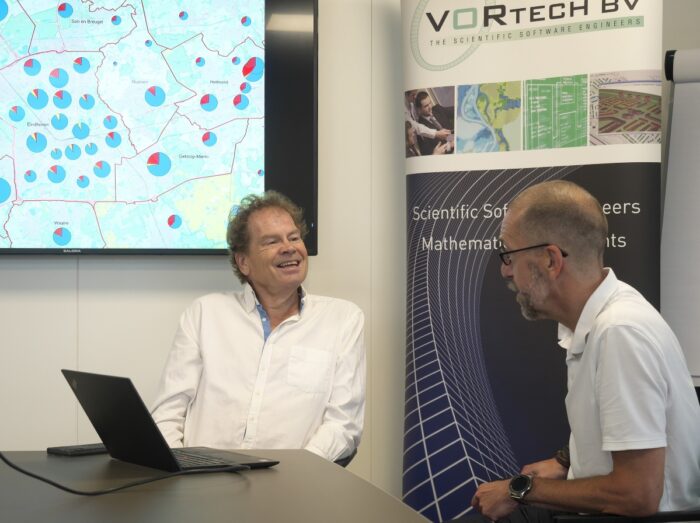
VORtech Blog

2025-06-26
Changes in the VORtech team
There have been some staff changes within VORtech. We welcomed two new Scientific Software Engineers who we would like to introduce to you. The administration department had a few big changes. We had to say goodbye to two dear colleagues and we welcomed 2 new colleagues.
Read more

2025-06-26
The Impact of Machine Learning on Computational Software
If you want to know what role machine learning will play in developing computational software, then the group of professor Rob van Nieuwpoort at LIACS in Leiden is a good starting point. There, the new possibilities this technology offers are being explored in various ways.
VORtech aspires to be a bridge between academic research in the field of computational science and its application in industry and government. That is why we actively follow what research is being done. This led to an interesting conversation with Rob van Nieuwpoort, professor at the group Efficient Computing and eScience at Leiden University.
Read more

2025-05-06
Building with Legacy Software: Lessons from 15 Years of Evolution and Optimization
We would like to share some of the experiences we've had over the past 15 years working on critical software with a complex legacy component. It dates back to the 1980s and has evolved into a powerful system packed with domain knowledge and smart algorithms. Its "killer feature" is its ability to handle complex geometries. Over the years, the program has more than proven its value.
Read more

2024-12-06
Four European supercomputers in the top 10, but how relevant is that?
The top 10 of the November 2024 list of supercomputers is very much a western affair, all coming from the US, Europe and Japan. But in fact, if China’s fastest supercomputers were listed, they would be third and fifth on the list. And the commercial sector is building machines that are even faster than the number one.
Read more

2024-09-03
Lunch lecture about modernizing software
Do you recognize this: software that was developed long ago, has been extended and adapted for years, but no longer meets today’s standards? If so, then our lunch lecture on modernizing software on September 24 is for you.
Read more

2024-09-02
Copilot: Programming with AI
Although there are still plenty of doubts about the real impact of AI, there is one sector where its effect can no longer be denied: software development. VORtech quickly started working with the new AI possibilities. But not without the necessary safeguards because there are indeed risks.
Read more

2024-09-02
Collaborating on open-source software
When Hans Voerknecht developed a new way to evaluate accessibility a few years ago, he quickly knew that this would require good software. Although he could program himself, he also realized that his strength lies in devising the calculation method and not in software development. That is why he partnered with VORtech.
Read more

2024-09-02
Computing for a sustainable future
Every year, humanity uses some 40% more of the earth’s resources than the earth can sustainably supply in that year. Clearly, this cannot go on forever. Awareness of this is growing and major transitions are starting to take shape. As an expert in developing computational software, VORtech sees an important role for itself in developing the software for computing and simulation that is needed to make these transitions. We are happy to see this already reflected in our client portfolio.
Read more

2024-08-28
DUCOMS 2024: the place to be for computing enthusiasts
The DUCOMS 2024 event takes place on November 12th at the Jaarbeurs in Utrecht. This is the second edition of this meeting, after a very successful and well-visited event last year.
Read more

2024-01-09
GPGPU: the workhorse for demanding computations
If runtime is a problem for your application, then the use of a general-purpose graphics processing unit (GPGPU) can be a solution. GPGPUs can sometimes speed up computations by an order of magnitude. As an extra advantage they use far less power per computation. But exploiting their computational power is not always easy and only works for applications that meet specific requirements.
Read more